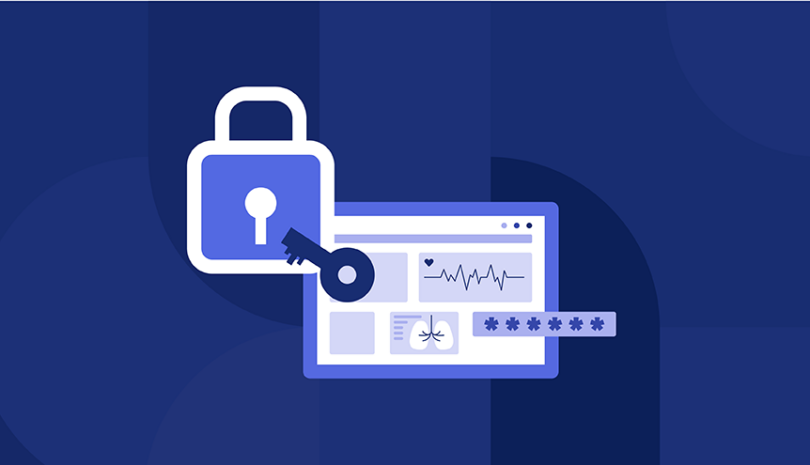Third-party risk management (TPRM) helps colleges and universities identify their external vendors, understand what data they access, and evaluate the risks they introduce. In higher education, it’s not just about cybersecurity, it’s about protecting institutional trust, maintaining academic and operational continuity, and staying compliant with ever-tightening data regulations.
In 2025, TPRM has become a critical priority. Schools are increasingly reliant on third-party platforms for learning, communication, health services, and research. At the same time, cyber threats are growing more frequent and more damaging, and regulators are stepping up enforcement. From FERPA and GDPR to evolving AI and data ethics laws, institutions are under pressure to manage vendor risk with more rigor and transparency.
This blog explores what Higher Education TPRM really entails, why it’s different from traditional TPRM, and how institutions can build stronger, scalable oversight programs. Whether you’re just starting out or refining an existing strategy, this guide offers practical direction for what comes next.
The Evolving Risk Landscape in Higher Education
Colleges and universities today depend on a wide range of third-party providers to deliver critical academic, administrative, and student services. From learning management systems and cloud-based student information platforms to financial aid processors and research collaboration tools, third parties are woven into nearly every institutional function.
Common vendor types include:
- Edtech platforms and SaaS-based learning tools
- Cloud systems for student data management
- Payment gateways for tuition and fees
- Telehealth and mental wellness providers
- Research data sharing and analytics platforms
While this digital transformation improves flexibility and scale, it also dramatically increases the institution’s risk surface. Threat actors are actively targeting the education sector with ransomware, phishing, and other forms of cyberattacks. Data breaches are becoming more frequent and more damaging, often exposing sensitive student and faculty information.
In fact, the education sector ranked third in data breach frequency across all industries in 2024, according to IBM’s Cost of a Data Breach Report, with an average breach cost of $3.65 million.
At the same time, institutions face heightened scrutiny around regulatory compliance. FERPA violations, GDPR breaches, and lapses in accessibility standards can result in fines, legal action, and reputational harm. When vendors fail to meet these standards or act unethically, the blowback can extend to the institution, undermining student trust, media credibility, and even public funding.
In this climate, effective third-party risk management is no longer optional, it’s essential.
What Makes Higher Education TPRM Unique
Third-party risk management in higher education presents a distinct set of challenges that differ from those in the corporate world. Unlike centralized enterprises, colleges and universities often operate with highly decentralized structures. Different departments, campuses, or even individual research labs may engage vendors independently, bypassing centralized IT or procurement teams. This fragmentation makes it difficult to maintain consistent oversight or enforce uniform security standards.
Adding to the complexity is the sheer variety of data higher education institutions manage, including student academic records, faculty employment details, financial information, protected health data, and proprietary research. Each data type brings its own compliance requirements, from FERPA and HIPAA to GDPR and accessibility laws.
Hybrid learning environments further expand the risk surface. Institutions rely on third-party platforms to deliver coursework, support virtual collaboration, and manage student services, often through tools adopted quickly during the pandemic without comprehensive vetting.
Many institutions also face internal constraints: limited budgets, lean security teams, and insufficient training in vendor risk management. Smaller colleges and public universities, in particular, may lack the resources to establish formal TPRM frameworks, even as their exposure to third-party risk continues to grow. These conditions make purpose-built, scalable TPRM solutions essential for higher education success.
Core Components of a Higher Education TPRM Program
To effectively manage vendor risks, higher education institutions need a TPRM program that’s structured yet flexible. A successful program addresses the full vendor lifecycle, from onboarding to offboarding, and aligns with the institution’s decentralized nature and diverse data environment. At its core, a strong TPRM framework includes five foundational components: maintaining an accurate vendor inventory with risk classification, conducting due diligence and security assessments, implementing continuous monitoring and alerting, embedding contractual safeguards and exit strategies, and promoting stakeholder training and governance. Together, these pillars help institutions reduce risk, improve compliance, and build long-term operational resilience.
Vendor Inventory and Risk Classification
Visibility is the foundation of effective third-party risk management. Institutions must build and maintain a centralized vendor inventory that captures key information: which departments or campuses use each vendor, what types of data they access, and the criticality of their services. This centralized view helps identify duplicative services, shadow IT, and unmanaged risk. Each vendor should then be classified based on inherent and residual risk factors like data sensitivity, compliance exposure, and operational dependency. High-risk vendors require more rigorous oversight, while low-risk vendors can follow a lighter-touch approach. Prioritizing efforts ensures resources are directed where they matter most.
Due Diligence and Security Assessments
Before engaging any third-party vendor, institutions must conduct thorough due diligence. This includes assessing data protection practices, cybersecurity controls, financial health, regulatory compliance (such as FERPA and GDPR), and accessibility standards. A standardized review process, often powered by risk questionnaires, documentation requests, and automated assessment tools, ensures consistency and reduces manual effort. Institutions should tailor diligence based on vendor risk classification and leverage shared assessments when possible. The goal is to uncover red flags early, ensure alignment with institutional values and policies, and reduce the chance of introducing security, compliance, or reputational risks during onboarding.
Ongoing Monitoring and Risk Alerts
Vendor risk is not static, it evolves with business operations, threat landscapes, and regulatory environments. That’s why ongoing monitoring is essential. Institutions should regularly review vendor performance and stay informed about emerging threats, public data breaches, lawsuits, or compliance violations. Risk monitoring tools can automate alerts and feed external intelligence into internal risk dashboards. This real-time visibility helps institutions take swift action when a vendor’s risk profile changes. Whether it’s escalating concerns to leadership, pausing data access, or triggering reassessments, continuous monitoring allows teams to stay ahead of issues before they lead to operational disruption or regulatory exposure.
Contractual Safeguards and Exit Planning
Vendor contracts are a critical control point in third-party risk management. Institutions should include security requirements, service-level agreements (SLAs), breach notification timelines, audit rights, and compliance obligations in every contract. It’s also essential to define clear exit strategies. Business continuity clauses, data return and deletion provisions, and termination triggers help ensure a smooth transition if a vendor relationship ends. For high-risk vendors, institutions should have contingency plans in place to minimize downtime and protect sensitive data. When well-designed, contractual safeguards don’t just manage legal risk, they reinforce accountability and set expectations from the start of the partnership.
Stakeholder Training and Governance
TPRM is not just an IT responsibility, it requires coordinated effort across the entire institution. Legal, procurement, information security, compliance, academic leadership, and departmental stakeholders must be involved in evaluating, approving, and managing vendors. That collaboration starts with training. Faculty and staff need to understand the importance of vendor oversight, how to follow procurement processes, and where to escalate concerns. Governance frameworks can help clarify roles, standardize procedures, and ensure consistent application of policies across decentralized environments. With the right governance in place, institutions can scale their TPRM programs, build internal alignment, and respond more effectively to vendor-related risk.
Why Higher Education TPRM is Critical in 2025
In 2025, third-party risk management is no longer a nice-to-have, it’s a regulatory, reputational, and operational imperative for higher education institutions.
Regulators are intensifying enforcement of existing laws like FERPA and introducing new ones that govern AI usage, biometric data, and international data transfers. Institutions are subject to more frequent audits, while cyber insurers are tightening underwriting requirements, often insisting on evidence of formal TPRM frameworks. Without these safeguards, institutions may face reduced coverage or higher premiums.
At the same time, public scrutiny is growing. Students, parents, and faculty expect transparency in how personal data is collected, stored, and shared, especially as edtech platforms proliferate. A single vendor misstep can trigger national headlines, spark public backlash, and damage institutional credibility.
The threat landscape has also escalated. Cybercriminals are targeting universities with ransomware campaigns designed to steal or encrypt research data, disrupt services, and pressure institutions into costly payouts. Many attacks exploit third-party vulnerabilities.
Against this backdrop, proactive TPRM is one of the most effective ways to reduce exposure. By vetting vendors thoroughly, monitoring them continuously, and enforcing strong contractual safeguards, institutions can meet regulatory demands, maintain public trust, and build greater resilience against modern cyber threats.
Getting Started or Maturing Your Higher Education TPRM Progran
If you’re building or refining a TPRM program, use these five steps to guide your approach:
- Assess your current state. Begin with a risk gap analysis or TPRM maturity assessment. This helps identify strengths, weaknesses, and areas where your institution needs to improve or formalize its third-party oversight.
- Centralize TPRM efforts. Create standardized policies, processes, and templates that can be applied across departments. Even in decentralized environments, a unified framework brings structure and accountability to vendor management.
- Use shared resources. Take advantage of higher ed consortia, vendor risk databases, and sector-specific tools designed for academic institutions. These resources can streamline workflows and reduce administrative burden.
- Prioritize high-risk vendors. Focus first on third parties that handle sensitive data or support critical operations, such as student information systems, financial processors, or telehealth platforms. Apply more rigorous assessments and monitoring here.
- Build incrementally. Don’t wait for perfection. Launch with foundational practices, measure progress, and scale gradually. A phased approach allows you to adapt, improve, and embed TPRM as a sustainable, evolving part of your institution’s risk posture.
Higher Education TPRM Solutions
Managing third-party risk in higher education isn’t just about compliance, it’s about protecting the people, systems, and data that keep your institution running. With a growing network of vendors powering learning, research, and student services, institutions need tools that can adapt to scale and complexity.
A proactive TPRM program helps safeguard students, faculty, and institutional trust. It reduces legal exposure, supports accreditation and audit readiness, and can improve your ability to secure cyber insurance coverage.
Panorays enables higher education institutions to streamline and scale their TPRM programs with automated vendor risk assessments, continuous monitoring, and collaborative workflows. Built for dynamic environments, Panorays provides the visibility and control needed to manage third-party risks across decentralized campuses and departments.
Now is the time to evaluate your current approach. Are your third-party oversight practices scalable, transparent, and risk-aligned? If not, Panorays can help you take the next step toward institutional resilience.
Book a personalized demo today to see how Panorays supports higher education TPRM at scale.
Higher Education TPRM FAQs
-
Because institutions rely on dozens, often hundreds, of vendors to deliver education, student services, and research. Without oversight, these vendors can introduce compliance, security, and reputational risks.
-
Vendors that handle personal data (like SIS or LMS platforms), financial transactions, health services, or proprietary research are typically the most high-risk.
-
Higher ed TPRM must accommodate decentralized decision-making, more diverse data types, and unique compliance requirements like FERPA. It also often operates with fewer centralized resources than a typical enterprise TPRM team.



